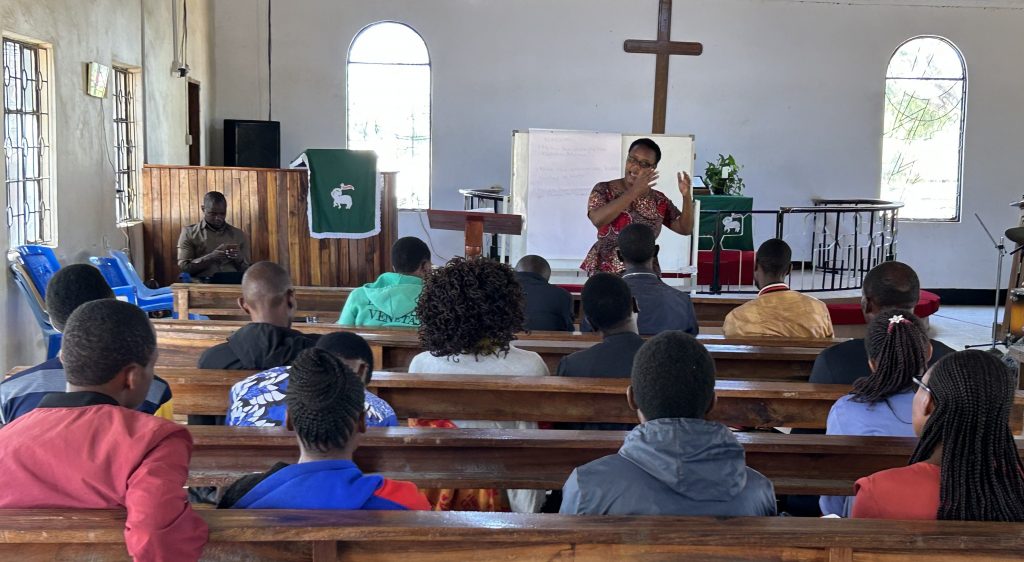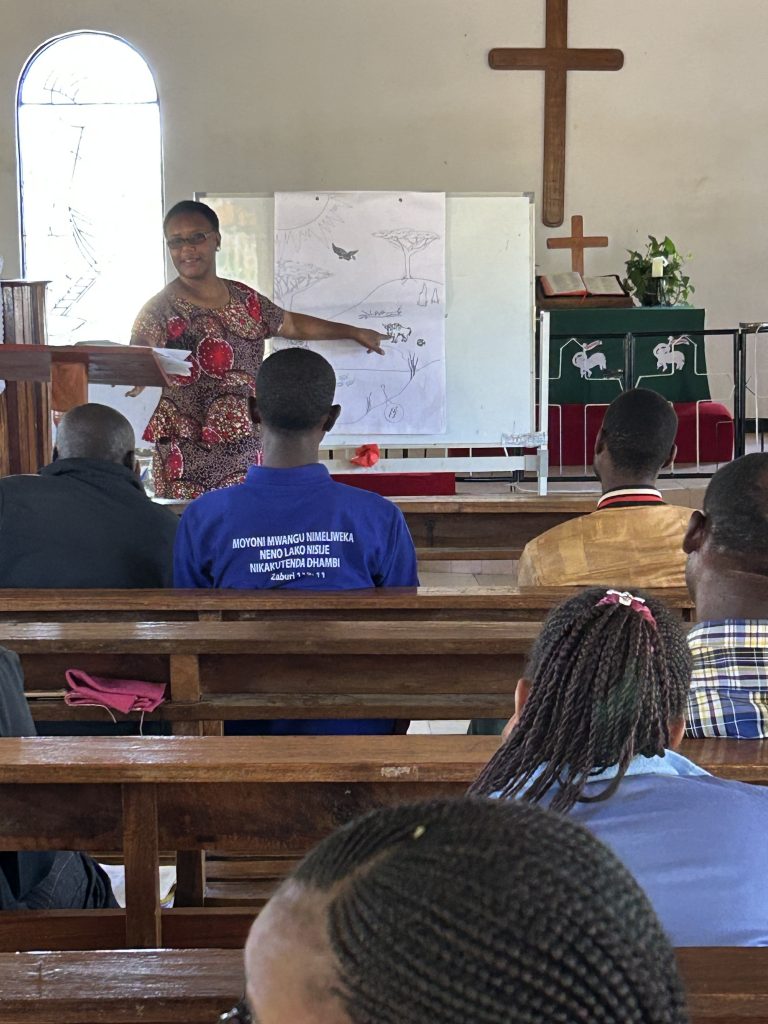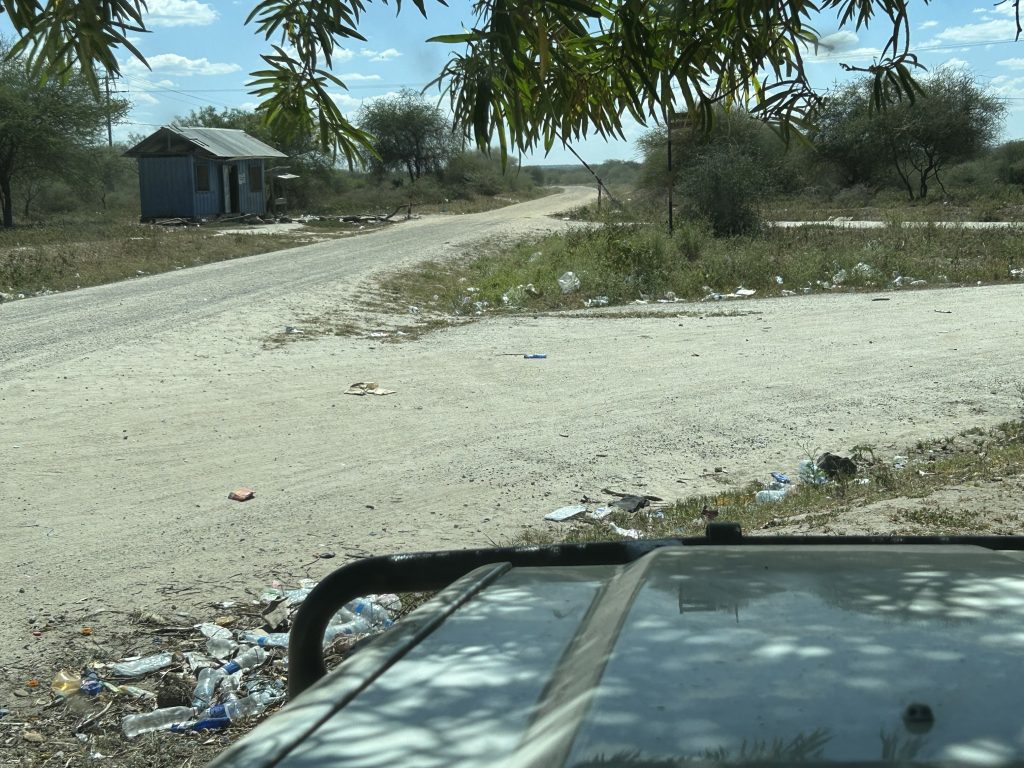On Wednesday, Rev. Dr. Suzana Sitayo (henceforth Suzana), taught the three lessons for my research project. This is the third fieldwork site and the third teacher. I have thought that this might be seen from some as a design flaw, as there is a significant amount of variability: three teachers writing lessons for 4 target research groups. However, one of the project’s goals is to evaluate which of the 4 research groups demonstrates effectiveness is the learning outcomes. With very limited resources in this context, the goal is to identify the stronger use of limited resources in the future.
The group of 15 students in Kibaya is the first group of adults, as lay pastors in training. In addition, it was the first group with Kiswahili surveys. Yes, another potential research design issue, but again, there are three languages used in this context: English in secondary school, Kiswahili as the lingua franca, and Maa is the language that is dominant in the rural areas. So, if I am evaluating the effectiveness of these lessons in the target groups, the appropriate language needs to be used.


Suzana teaching (my quick drawing of an ecosystem).
In this Kiswahili context with students—who few if any attended secondary school—it was clear that the survey question: “What is the cause of the “greenhouse effect?” was not going to work. No one has seen a greenhouse! So, it would take so much effort to teach what a greenhouse is in order to use it metaphorically. This is a cognitive leap. So, in talking about this with Suzana, we decided that the metaphor of a blanket of these planet warming gases (not greenhouse gases) is keeping in the heat from the sun and warming up the earth.
The students sat on uncomfortable pews (three slats instead of a solid seat) each day. Yet, they were very attentive, actively taking notes, and asking insightful questions. Suzana said that she was excited to teach the lessons, especially the third one on climate science. I asked why. She replied that the first two lessons—biblical creation care and Maasai traditional environmental knowledge and its correlation with biblical creation care—were lessons where they had some foundational knowledge, but the climate science appropriate for pastoralist Maasai would be new knowledge.

Students are engaged and taking good notes.
One of my pet peeves that also relates to climate change (and environmental and human health) is burning plastic that releases CO2 (a planet warming gas, as plastic production and burning are linked to 5% of what is causing climate change) and toxic chemicals.

A view of plastic garbage while en route
A quick look at a survey question with pre- and post-lesson responses is that there was a significant shift in understanding. For the Likert scale question—“I believe that burning plastic drinking bottles is a good way to reduce trash in the environment.”—in the pre-lesson survey, 20% strongly disagreed or disagreed, and in the post-lesson survey, 67% strongly disagreed or disagreed. A 47% change in only 3 lessons! Still it is not 100%, which we would like to see. However, there is a practical issue. So, what are they supposed to do with plastic bottles? In the urban areas, there are recycling centers, but these are not funded by the government. There is no recycling in the rural areas. Well, we start by reducing. So, I make sure that when I buy sodas as part of a thank you gift for the research participants, I buy crates of sodas with glass bottles. I’m even wondering if I can find a connection with Coca-Cola Tanzania and suggest that they produce bottled water (there is bottled soda water). All plain drinking water is sold in plastic bottles. UGH! So, if Coca-Cola would bottle drinking water and sell it for just a bit cheaper than the plastic bottled water, they would not only expand their market into the drinking water market, but they could develop their “green” profile and market this (though they do sell soda in plastic bottles too). I have given up drinking Coke Zero at restaurants in Tanzania, as it only comes in plastic bottles, and I’m not sure if restaurants are recycling.
It is easy to say stop buying plastic bottles, but it is hard to have a replacement for safe drinking water. So, I pack my water filter and fill my own water bottle and offer to fill in water bottles for others. However, few have their own water bottle, like is pretty common in the USA and Sweden, so I think I will give gifts of stainless steel water bottles to my friends here! Now, if they boil (and cool) tap water on an electric stove, this is not so bad, as there is a lot of hydro power in Tanzania. But in the more rural areas, food is cooked and water is boiled with wood, charcoal, or propane—all emitting planet warming gases. Oh, it is not easy!
Mikitamayana Engai! / Mungu akubariki! / God bless you!